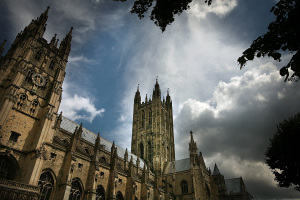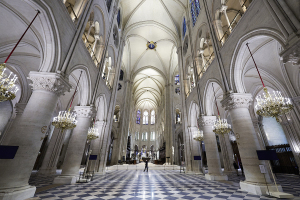Scholars Downplay Tablet Debate on Messiah, Resurrection
An eclectic Jewish scholar is causing a media stir by claiming that Jesus and his disciples copied the idea of a messiah rising again after three days, basing his interpretation of scattered text found on a so-called ancient tablet. This idea fails to hold up when compared with the assessment of other Biblical scholars – many who say the relic is too badly preserved to even read.
The tablet is not a new find but is catching news waves because Israel Knohl, a professor of Bible studies at Jerusalem's Hebrew University, was slated to present his interpretation of the text on Tuesday at a Jerusalem conference marking the 60th anniversary of the discovery of the Dead Sea Scrolls.
The three-by-one foot tablet – dubbed "Gabriel's Vision" because it contains apocalyptic text ascribed to the angel – displays 87 lines of text on gray-colored stone. It is owned by a collector in Zurich who said he acquired it from an antiquities dealer in Jordan.
Knohl contends to The New York Times that his reading of the fragmented text of line 80 "should shake our basic view of Christianity" because it presents the resurrection of after three days as a motif developed before Jesus and not unique to Christianity.
The Jewish scholar takes his loose interpretation one step farther by arguing that "what happens in the New Testament was adopted by Jesus and his followers based on an earlier messiah story," according to The Times.
But many respectable biblical scholars are rejecting Knohl's controversial reading of the text based on the fact that most of the text is missing.
Even Knohl's colleague, Moshe Bar-Asher, president of the Israeli Academy of Hebrew Language and also a professor at Hebrew University, finds his interpretation far-reaching.
"In crucial places of the text there is a lack of text. I understand Knohl's tendency to find there keys to the pre-Christian period, but in two to three crucial lines of the text there are a lot of missing words," said Bar-Asher in The Times article.
Ben Witherington, a reputable New Testament professor at Asbury Theological Seminary in Wilmore, Ky., weighed in on the topic, saying on his blog that it's not clear that the text is even talking about a risen messiah. In a Time magazine article, he additionally points out that the Gospel texts don't just rely on the observed fact of the Resurrection but on testimonies of eyewitnesses to Jesus' post-Resurrection self.
"This stone certainly does not demonstrate that the Gospel passion stories are created on the basis of this stone text," Witherington concluded on his blog. "But what it does do is make plausible that Jesus could have said some of the things credited to him in Mark 8:31, 9:31, and 10:33-34."
Ada Yardeni, a Hebrew language specialist, who published an article on the tablet over a year ago in the Hebrew-language journal Cathedra, also agreed that line 80 was illegible.
In her review, she did note that the relic, thought to be dated sometime between the late first century B.C.E. and early first century C.E., bore some resemblance to the Dead Sea Scrolls but found the text "very hard to read" and the tablet "badly preserved." While she said the text was "intriguing," she suggested that it probably "only emphasizes the variety of Jewish movements at the turn of the era."
One scholar who was expected to listen to Knohl's argument on Tuesday shared his take on the issue to UK's The Independent.
Professor Lawrence Schiffman, professor of Hebrew and Judaic Studies at New York University, said the text was being restored to "say something which it may or may not say." He acknowledged that Jesus was a "victim of sensationalism all the time" since a single part of the text was being used to create a "media experience."
Media Research Institute, a media watchdog, also red-flagged the story angle many newspapers sold on the implications of Knohl's interpretation on the basic tenet of Christianity.
"Here we go again. Another relic pops up of questionable authenticity that one or two experts is saying casts doubts on the unique claims of Christian orthodoxy," Ken Shepherd wrote on the watchdog's related Web site called News Busters.
"What's more, it's laughable on its face that one obscure, questionably-interpreted transcript of an alleged angelic annunciation has anything on the public witness of the early church, which based its arguments for the resurrection of Christ from first-hand eyewitness accounts of some 500 people of the risen Jesus and Hebrew scriptures on the person and work of the Messiah," he added.
And even though Time magazine ran its story under a sensational headline "Was Jesus' Resurrection a Sequel?" the writers admit that "such a contentious reading of the 87-line tablet depends on creative interpretation of a smudged passage, making it the latest entry in the woulda/coulda/shoulda category of possible New Testament artifacts; they are useful to prove less-spectacular points and to stir discussion on the big ones, but probably not to settle them nor shake anyone's faith."
In what may not come as a surprise, Knohl is the same professor who thought the caves surrounding the site of the "Jesus family tomb" should be excavated for more research when most experts had already dismissed and rejected that the ossuaries had anything to do with the historical Jesus.



























